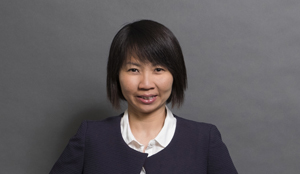Singapore recognises patent insufficiency due to uncertainty for the first time
Sufficiency, together with the other requirements for patent protection – namely, novelty, inventive step and industrial applicability, ensures that the patent bargain is struck.
In Singapore, insufficiency is a ground for patent revocation under section 80(1) of the Singapore Patents Act (Cap. 221) (“the Act”). Whilst the Singapore courts previously only recognised classical insufficiency, the Court of Appeal has now – in the case of Ila Technologies Pte Ltd v Element Six Technologies Pte Ltd [2023] SGCA 5 (“Element Six”), also recognised insufficiency arising from uncertainty. In this article, we examine this decision and its takeaways.
Brief facts
The parties are competitors in the diamond business. The subject patent in the appeal – which belongs to Element Six - discloses a new synthetic diamond material having specified properties, and included both product and process claims. In the first instance, Element Six had asserted two patents against Ila. The subject patent was found to be valid and infringed, whilst the other patent was found to be invalid for lacking novelty and/or inventive step. Ila appealed against the findings relating to the subject patent. Element Six did not cross-appeal. Consequently, the Court of Appeal was only concerned with one patent.
The part of the Judgment in which the Court of Appeal set out its reasoning is highly technical and is out of the scope of this article. It suffices to say that the Court of Appeal found all the claims of the subject patent to be invalid for insufficiency:
- The product claims were found to be classically insufficient, because the skilled person has not been taught how to grow diamonds across the entire range of products claimed.
- The process claims were also found to be classically insufficient, because they imposed an undue burden on the skilled person in trying to determine the growth conditions to be used for the patented diamond growing process.
- Additionally, both the product claims and process claims were found to be insufficient due to uncertainty because the skilled person would not know what test to apply to ascertain whether the d value (being a claimed parameter) of a particular diamond exceeds a specified value and therefore satisfied the independent product claim. For this reason, the process claims – which defined the claimed process as one which would produce a diamond material that would meet the requirements of the product claims – were found to be insufficient for the same reason.
Insufficiency due to uncertainty recognised
Previously, the Singapore courts only recognised classical insufficiency - where the patent specification fails to teach the skilled person to work the invention. The Court of Appeal has now accepted that insufficiency may also result from uncertainty, which arises where the skilled person is unable to determine whether a product or process falls within a claim. This concept is well-established under English law, but has never previously been recognised in Singapore.
In its judgment, the Court of Appeal took pains to distinguish uncertainty giving rise to insufficiency from mere lack of clarity for the purpose of section 25(5)(b) of the Act. A lack of clarity may give rise to objections at the patent application stage, but is not a ground for patent revocation. The court had this to say (at [131]):
The test for clarity is whether the PSA can understand the words used in the claims. In this regard, there is no need to remove all conceivable doubt as to the meaning of the claims, but the claims must be as clear as the subject matter reasonably permits… A lack of clarity in the claim’s language, however, does not per se amount to uncertainty in the context of insufficiency… To result in uncertainty giving rise to insufficiency… the lack of clarity in claim language must leave the [skilled person] unclear as to how to determine whether a particular product or process is within the scope of the claim even after drawing upon his common general knowledge or applying the typical claim construction process.
The comments made by the English Court of Appeal in Anan Kasei Co Ltd v Neo Chemicals and Oxides Ltd (formerly Molycorp Chemicals and Oxides (Europe) Ltd) [2019] EWCA Civ 1646 (at [101]) helps to clarify the distinction:
[T]here is a difference between a fuzzy boundary… and a boundary whose location is impossible to ascertain. It may be impossible to ascertain because it is described in meaningless terms… or because the patent does not explain how to decide where the boundary is… If the court cannot ascertain the boundary, having used all the interpretative tools at its disposal, it must conclude that the specification does not disclose the invention clearly enough and completely enough for it to be performed by a person skilled in the art.
One example of when a lack of clarity may not give rise to insufficiency was given in Kirin-Amgen Inc v Hoechst Marion Roussel Ltd [2004] UKHL 46, where the House of Lords observed (at [128]) that:
The skilled person is taken to be trying to make the invention work. If the skilled person would quickly realise that one method would work and another would fail, the specification is not insufficient because the claim is expressed in terms broad enough to include both methods.
The recognition of the concept of insufficient due to uncertainty provides third parties with an additional avenue of attack against patents of concern. The distinction between a fuzzy boundary (which is a lack of clarity issue) and a boundary which location cannot be ascertained (which leads to insufficiency) may not always be clear. The fact that the determination of the side of the divide which any claim falls on may depend on the state of the common general knowledge at the priority date exacerbates the uncertainty. This is expected to provide fodder for disputes and may lead to more litigation in future.
Open questions relating to sufficiency
The Court of Appeal left two questions relating to the sufficiency requirement undecided as it was unnecessary to do so to decide the appeal.
The first is the standard of substantiality for classical in sufficiency. The court observed (at [112]) that in Regeneron Pharmaceuticals Inc v Kymab Ltd [2021] 1 All ER 475, the majority of the UK Supreme Court held that the patent specification need not teach the skilled person to make every embodiment which falls within the scope of the claim; it is enough that the patent enables the PSA to make “substantially all the types or embodiments” of products within this scope. The court noted that this standard was endorsed in Regeneron because it was the position in EU law (based on previous EU decisions) which the UK was obliged to adopt, and that Singapore is not bound by a similar obligation. This leaves open the possibility for the Singapore courts to adopt a stricter approach.
The second is the applicability of “Biogen insufficiency” (so name because it was first recognised in Biogen Inc v Medeva PLC [1997] RPC 1). This is where the patent specification does not enable the skilled person to perform the invention across the full breadth of the monopoly claimed. The Biogen case itself illustrates the principle that a claim to a class of products is only sufficient if every member of the class is enabled. Another example is where there is a claim is to “a heavier than air flying machine” in a patent which only discloses how to make an airplane. The Court of Appeal left the question of whether this concept should apply at large. However, it seems likely to be recognised in a future case, seeing as the objection here is that the scope of the claim exceeds the technical contribution made by the invention, so that the patent bargain has not been struck.
Status of dependent claims
As noted, the Court of Appeal had found both the product claims and process claims to be insufficient, inter alia, due to uncertainty because the skilled person would not know what test to apply to ascertain whether the d value of a particular diamond exceeds a specified value.
The court only analysed the independent product claim – Claim 1 - in detail, but found that the same conclusion would apply to the dependent claims, whether they be product claims or process claims, “because all the other claims… have defined the scope of their monopoly by reference to Claim 1” (at [235]), so that it cannot be determined whether any particular diamond material or process for producing a diamond material satisfies these claims.
It is unclear from the judgment whether arguments had been tendered on, or whether the Court of Appeal had examined, the integers of the dependent claim to ascertain whether any of these might have “cured” the uncertainty found in Claim 1. For instance, given that the uncertainty was with the test for determining the d value, a dependent claim which specified the applicable test could have done the trick. It is assumed that the court arrived at its conclusion because none of the dependent claims contained any such integer.
Also, notably, the Court of Appeal chose not to comment on the correctness of the observation in Sunseap Group Pte Ltd v Sun Electric Pte Ltd [2019] 1 SLR 645 (at [70]) that if all the independent claims in a patent are invalid (e.g., for lack of novelty or lack of inventive step), “it follows that the dependent claims must also fall”, and the patent ought to be revoked. This observation has attracted some debate as it seems to go against the well-established principle that whether a dependent claim meets the requirements for patentability would depend on the features set out in the claim. It is unfortunate that the Court of Appeal did not take the opportunity to clarify its earlier statement. We shall have to continue to wait for the courts provide clarity on this issue.
This article is produced by our Singapore office, Bird & Bird ATMD LLP. It does not constitute as legal advice and is intended to provide general information only. Information in this article is accurate as of 21 April 2023.





